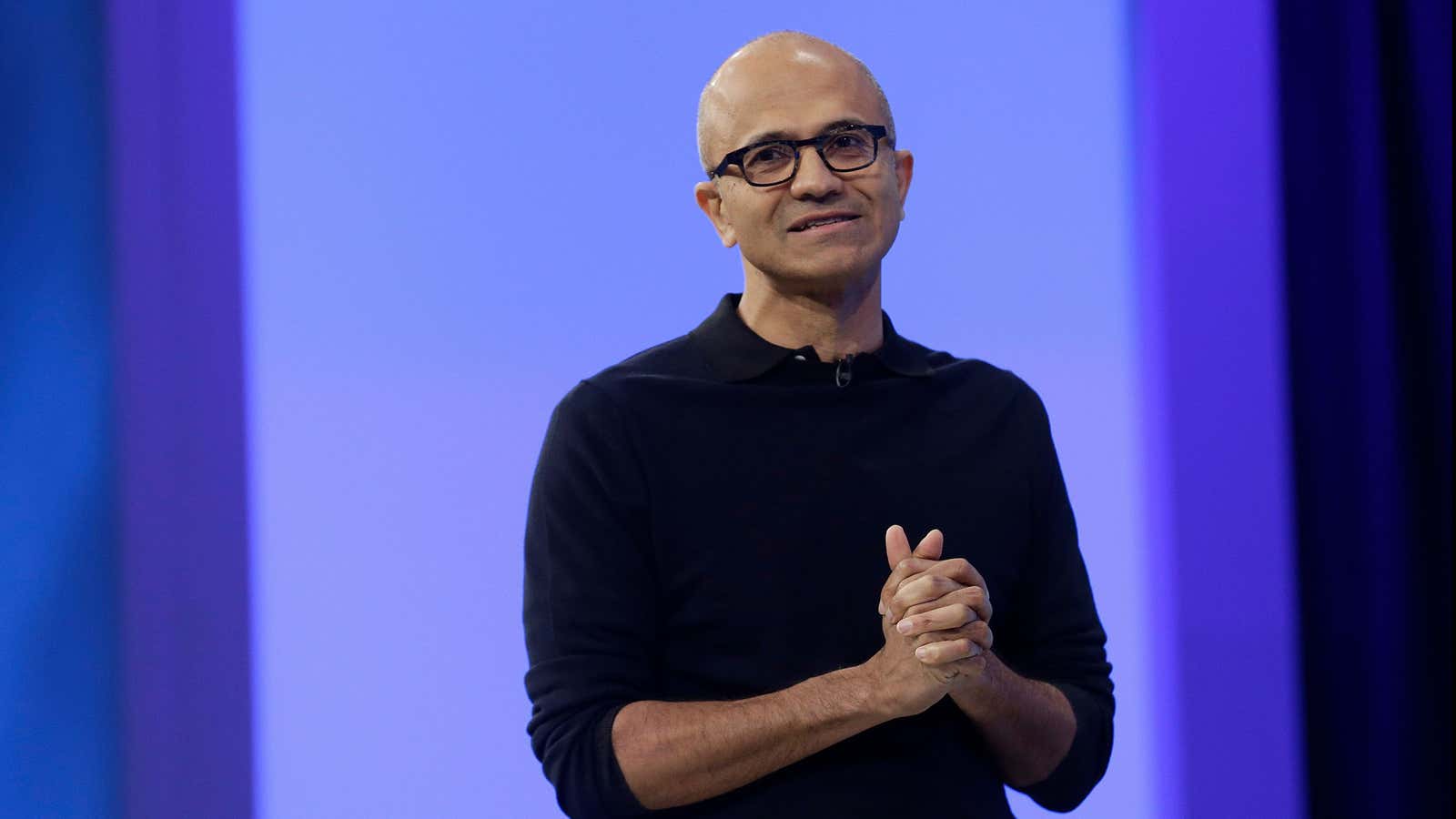Satya Nadella, chief executive of Microsoft, seems like the type of CEO who would practice meditation religiously. In interviews and public appearances, he projects a calm, thoughtful vibe, is forever espousing the benefits of empathy and compassion, and often cautions people against the hazards of a “fixed mindset.”
But in a recent podcast, we learned that he spends a mere 90 seconds on mindfulness daily, first thing every morning.
“The one meditative thing I actually do is getting up in the morning and putting your feet down,” he told Michael Gervais, the psychologist who hosts the podcast Mastery, and who has coached Nadella and dozens of others at Microsoft. Gervais, whose other clients include professional athletes and Olympians, responded, “It’s so simple, right?”
“It grounds you, it gets you in touch with yourself and the world around you, it’s fascinating,” said Nadella.
The exchange was brief, but too intriguing for Quartz at Work to ignore. Reaching Gervais by phone, we asked him to explain the full exercise, which is actually comprised of four steps.
You begin by taking a deep breath, which should last about 12 seconds, while still in bed. Next, you mentally name something you’re thankful for. Then make one intention for your day and see it in your mind’s eye. Finally, put your feet on the ground and just feel your feet. That’s it.
Gervais calls it “thin slicing of mindset training.”
As he mentioned as a guest on another podcast, the practice is done in the morning, when most people are jumping out of bed, “turning off the alarm, grabbing their phone, checking Instagram.”
“That’s just getting into the business of everybody else’s story,” he said.
By contrast, each piece of his mindfulness morning exercise is meant to put you in your own life, in an optimal, clearheaded mental state, and builds what he calls “high performance psychological skills.”
The deep, calming breath, he explains, is meant to reset your body’s sympathetic nervous system, which activates what’s commonly referred to as flight or fight mode.
The second step, the “gratitude thought,” is supposed to “wake up” centers of the brain connected to optimism and contentment, Gervais says, referencing studies. Next up, the single intention. This is meant to take advantage of the science of imagery, or visualization, commonly used by athletes, to help you “feel and experience yourself performing well in a future state,” says Gervais. The last part, feeling your feet, is about becoming aware of “the thoughts or emotions or body sensations you’re having in that moment.” It’s a classic exercise in building mindfulness.
Apparently when people try it, they find themselves thinking, “This is weird. What am I doing? Is this really how I want to start my day?” Gervais reports, and they recognize how much chatter, doubt, and worry they live with. “They say, ‘Shit, this is hard,'” he tells Quartz.
The psychologist recommends practicing this training in the morning when, according to many studies, we have more available willpower. It’s meant to counterbalance stress and any sense of being overwhelmed, all of which are risks to the CEO of a $700 billion company, and to regular civilians.
